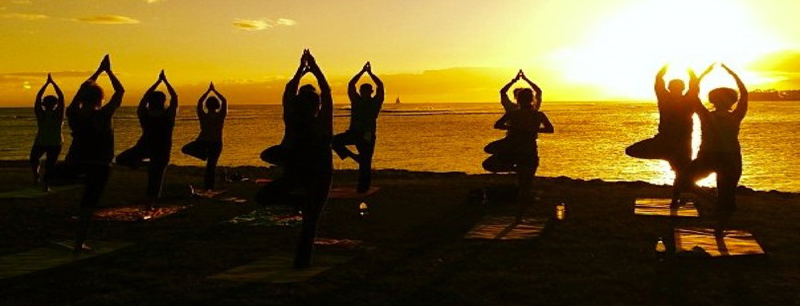
Yogasanas
The aim is to keep both the mind and the body in perfect health through exercise of the body and the mind. The special feature of yogasanas is that what they do for the body.They do for the mind in a much more effective way. They are not only body building exercises, more than that, they increase the mental powers. By achieving equanimity through asanas and pranayama, we control our senses as well as our breathing, which is capable of lengthening life span. More elastic our limbs, more healthy we are. In fact, elasticity is life. The age between 35 and 60 years is such that many of our limbs start becoming stiff and lose their elasticity. It is therefore most essential to take care of the body during this period. The old-age diseases, such as heart attack, blood pressure and diabetes generally attack a man during this period. Those who do not want to lose the chance of keeping their youth intact and their body yogasanas daily, so that the elasticity of limbs is maintained and the mental faculties do not disintegrate.
The impurities, which are formed due to the wear and tear of the body and the accumulation of wastes after the food has been digested, find the following outlets (i) thorough the nose in breath (ii) through the anus in the form of excreta (iii) through urine, and (iv) through the skin in the form of perspiration and dirt. Diseases are caused in the body when the impurities get accumulated in it. It is very obvious that if all these outlet properly through them, we can never fall ill. The regular practice of yogasanas keeps these outlets clean and open, besides strengthening the organs which are responsible for excreting these impurities.
YOGASANAS are of two types:
Meditative and physical. Those involving mental activity are meditative, such as Padmasana, Siddhasana and Sukhasana, and those which are done primarily for keeping the body fit are physical asanas.
While performing yogic postures keep in mind five essential principles:
(1) Bending of the body.
(2) Retaining the posture as per individual capacity.
(3) Control breathing (exhaling, chafing, inhaling, retention after inhaling as well stretched).
(4) Concentration on portion of the body being Practice stretched.
(5) Awareness about concentration centers,Practice of these principles increases effectiveness of the asanas and sequence of Pranayama is practiced. Sometimes we retain the posture with breath exhaled, while some time inhaled,e.g. in Paschimottana Asana we reach final position whle exhaling and concentrating on spinal region behind the naval area. In Bhujanga Asana we attain the posture while inhaling and concentrating on spinal area behind thoat. The method mentioned above, when followed methodically with faith, makes breathing stabilized and controlled. This results in calming the mind. While cleaning the body asanas help calming the nervous system.
Suryanamaskara (Salutation to Sun)
There are 12 postures in this kriya. Before starting the kriya, stand erect with heels joined together and front of the feet a little a part.
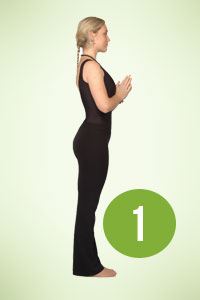
1. Keep your folded hands in the posture of namaskara in the center of your chest (Hridaya Chakra). The elbows should remain stretched outwards. Now recite the first of the twelve mantras given below. Concentrate on Agya Chakra.
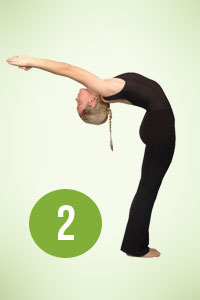
2. While inhaling the breath, stretch your hands up and take them as far back as you can beyond your head. But your arms must remain straight and should touch your ears. Bend back your body from waist upwards as far as you can.
Concentrate on Vishuddhi Chakra.
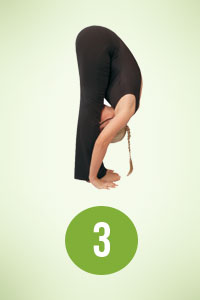
3. Now bring your arms forward from the front and bend your body down. Try to put the palms of your hands on the ground and place them beside your feet. In this state, try to touch the knees with your nose, without bending the knees, Exhale,
Concentrate on Manipur Chakra.
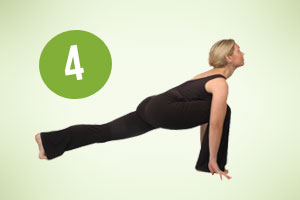
4. Now take the left leg backward, bend your right knee and let it take position between the two arms, with the hands sticking to the ground. The hands and the right foot should be in one line. Now bend the neck as far backward as you can, throwing the chest out. Inhale. Concentrate on Swadhistana Chakra.
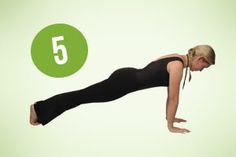
5. Exhale the breath and take your right leg also to the position of the left leg. Put your heels completely on the ground. Raise your hips upwards, touch your chest with your chin and look backward through your legs. Concentrate on Sahasrara Chakra.
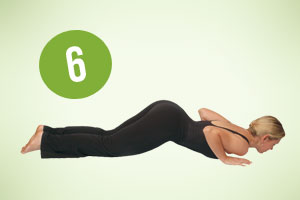
6. Place all your limbs on the ground except your hips which should be slightly raised from the ground. Your forhead, chest and knees should touch the ground. Make your breath normal.
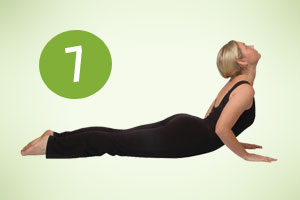
7. Now raise up the front portion of your body up to the chest, giving as little pressure on hands as you can Inhale. Bend your neck as far back as you can. This posture is like Bhujanasana, Concentrate on Mooladhara Chakra.
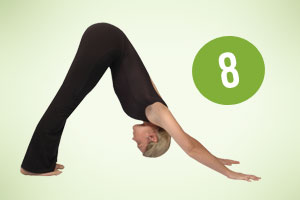
8. The same Position as in No.5

9. The same Position as in No.4

10. The same Position as in No.3

11. The same Position as in No.2

12. Finally, return to the position No. 1 and then take your hands down. Thus, one Suryanamaskara is complete. In the next Suryanamaskara, the right leg will go backward instead of the left.
Advantages: Suryanamaskara is actually a composite exercise containing seven different asanas. Stomach, lungs, liver, spleen, intestines and spinal cord are strengthened by its regular practice. The entire body, specially the waist, gains in elasticity. Practise Shavasana for a while after Suryanamaskara.
Some Other Useful Yoga Aasans
google ads



